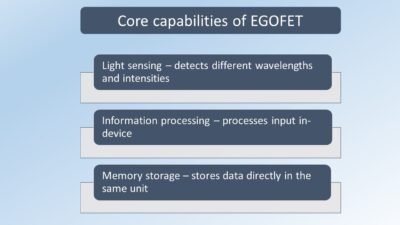MIT researchers have developed a sensor that can monitor wiring in a building or ship, and signal when repairs are needed.

A new system devised by researchers at MIT can monitor the behavior of all electric devices within a building, ship, or factory, determining which ones are in use at any given time and whether any are showing signs of an imminent failure. When tested on a Coast Guard cutter, the system pinpointed a motor with burnt-out wiring that could have led to a serious onboard fire. The sensor’s readings can be monitored on an easy-to-use graphic display called a non-intrusive load monitoring (NILM) dashboard.
The system uses a sensor that simply is attached to the outside of an electrical wire at a single point, without requiring any cutting or splicing of wires. From that single point, it can sense the flow of current in the adjacent wire, and detect the distinctive “signatures” of each motor, pump, or piece of equipment in the circuit by analyzing tiny, unique fluctuations in the voltage and current whenever a device switches on or off. The system can also be used to monitor energy usage, to identify possible efficiency improvements and determine when and where devices are in use or sitting idle.
Inspection showed that some of the diesel engine’s water heating coils, at right, were severely corroded. An uncorroded coil is shown at left. Courtesy: Massachusetts Institute of Technology[/caption]
“It’s a three-legged stool,” Leeb said. The system allows for “energy scorekeeping, activity tracking, and condition-based monitoring.” But it’s that last capability that could be crucial, “especially for people with mission-critical systems,” he said. In addition to the Coast Guard and the Navy, he said, that includes companies such as oil producers or chemical manufacturers, who need to monitor factories and field sites that include flammable and hazardous materials and thus require wide safety margins in their operation.
The monitoring system provides an easy-to-read display to show crew members the condition of the various electrical devices being monitored. As long as the needle stays in the green area, the device is operating normally, but if it goes to the orange or red segments, it means there’s an issue that needs to be checked. Courtesy: Massachusetts Institute of Technology[/caption]
The research team also included graduate students Daisy Green, Jennifer Switzer, Thomas Kane, and Peer Lindahl at MIT; Gregory Bredariol of the U.S. Coast Guard; and John Donnal of the U.S. Naval Academy in Annapolis, Maryland. The research was funded by the U.S. Navy’s Office of Naval Research NEPTUNE project, through the MIT Energy Initiative.
Massachusetts Institute of Technology (MIT)
Music tech | MIT – Massachusetts Institute of Technology
– Edited by Chris Vavra, production editor, Control Engineering, CFE Media, [email protected]. See more Control Engineering discrete sensor and vision stories.



